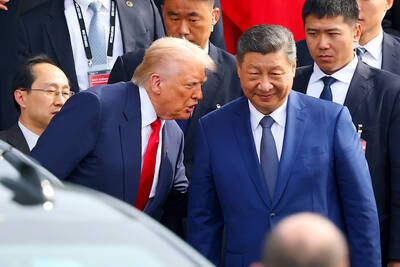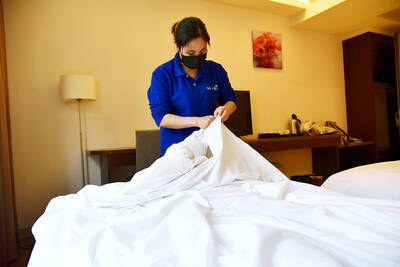A major row erupted between China and Russia over the location for joint military exercises, a Russian newspaper reported on Thursday.
According to the Kommersant daily, the Russian military had suggested the Xinjiang autonomous region of China, because of the area's problem with Uighur separatists and its proximity to Central Asia, a focus for the international fight against terrorism.
However, Beijing flatly rejected the proposal, and instead suggested Zhejiang Province near Taiwan.
Exercises in this area, the Kommersant noted in its report, "would look too provocative and trigger a strong reaction not only in Taiwan, but in the United States and Japan, which recently included the island in their zone of common strategic interests."
"Beijing is trying to use Russia as an additional lever of pressure on the disobedient island," it said.
However, the official Xinhua news agency reported late on Thursday that the two countries had agreed on details of their first joint military exercise, to be held in autumn, after Russian Chief of General Staff Yury Baluyevsky met his Chinese counterpart,Chief of General Staff Liang Guanglie (梁光烈), in Beijing.
Xinhua said the two generals had agreed on the make-up of troops, arms and equipment for the military exercise.
Due to the Russia's insistence, the exercise was shifted north to the Shandong Peninsula, the Kommersant said.
Baluyevsky said the exercise was aimed at boosting cooperation between the militaries of the two countries and improving training capabilities, reflecting closer ties between the two countries, Xinhua said.
"Russian paratroopers, marines and other forces will take part in the exercise," Baluyevsky was quoted as saying.
Liang also praised what he called the strengthening strategic partnership between China and Russia, Xinhua reported.
"Closer cooperation and exchanges between the two armies are of great importance in promoting the cooperation between the two countries and maintaining regional and international security," Liang was quoted as saying by Xinhua.
The joint exercises had originally been planned for last August.
The exercises will involve Il-76 transport planes carrying paratroopers, Tu-95MS strategic bombers firing cruise missiles at simulated targets in the sea and Su-27SM fighter jets simulating coverage of ground forces, according to Russian media reports.
The exercises are seen as part of Russia's desire to strengthen military cooperation with China, in response to the cooling of relations with the US and other Western nations. China, for its part, has been courting oil-rich Russia as it seeks to diversify its energy sources to feed its booming economy.
Russian military officials have said they also hope to encourage China to buy the bombers involved in the training.
Also see story:

CALL FOR SUPPORT: President William Lai called on lawmakers across party lines to ensure the livelihood of Taiwanese and that national security is protected President William Lai (賴清德) yesterday called for bipartisan support for Taiwan’s investment in self-defense capabilities at the christening and launch of two coast guard vessels at CSBC Corp, Taiwan’s (台灣國際造船) shipyard in Kaohsiung. The Taipei (台北) is the fourth and final ship of the Chiayi-class offshore patrol vessels, and the Siraya (西拉雅) is the Coast Guard Administration’s (CGA) first-ever ocean patrol vessel, the government said. The Taipei is the fourth and final ship of the Chiayi-class offshore patrol vessels with a displacement of about 4,000 tonnes, Lai said. This ship class was ordered as a result of former president Tsai Ing-wen’s (蔡英文) 2018

UKRAINE, NVIDIA: The US leader said the subject of Russia’s war had come up ‘very strongly,’ while Jenson Huang was hoping that the conversation was good Chinese President Xi Jinping (習近平) and US President Donald Trump had differing takes following their meeting in Busan, South Korea, yesterday. Xi said that the two sides should complete follow-up work as soon as possible to deliver tangible results that would provide “peace of mind” to China, the US and the rest of the world, while Trump hailed the “great success” of the talks. The two discussed trade, including a deal to reduce tariffs slapped on China for its role in the fentanyl trade, as well as cooperation in ending the war in Ukraine, among other issues, but they did not mention

HOTEL HIRING: An official said that hoteliers could begin hiring migrant workers next year, but must adhere to a rule requiring a NT$2,000 salary hike for Taiwanese The government is to allow the hospitality industry to recruit mid-level migrant workers for housekeeping and three other lines of work after the Executive Yuan yesterday approved a proposal by the Ministry of Labor. A shortage of workers at hotels and accommodation facilities was discussed at a meeting of the legislature’s Transportation Committee. A 2023 survey conducted by the Tourism Administration found that Taiwan’s lodging industry was short of about 6,600 housekeeping and cleaning workers, the agency said in a report to the committee. The shortage of workers in the industry is being studied, the report said. Hotel and Lodging Division Deputy Director Cheng

‘SECRETS’: While saying China would not attack during his presidency, Donald Trump declined to say how Washington would respond if Beijing were to take military action US President Donald Trump said that China would not take military action against Taiwan while he is president, as the Chinese leaders “know the consequences.” Trump made the statement during an interview on CBS’ 60 Minutes program that aired on Sunday, a few days after his meeting with Chinese President Xi Jinping (習近平) in South Korea. “He [Xi] has openly said, and his people have openly said at meetings, ‘we would never do anything while President Trump is president,’ because they know the consequences,” Trump said in the interview. However, he repeatedly declined to say exactly how Washington would respond in